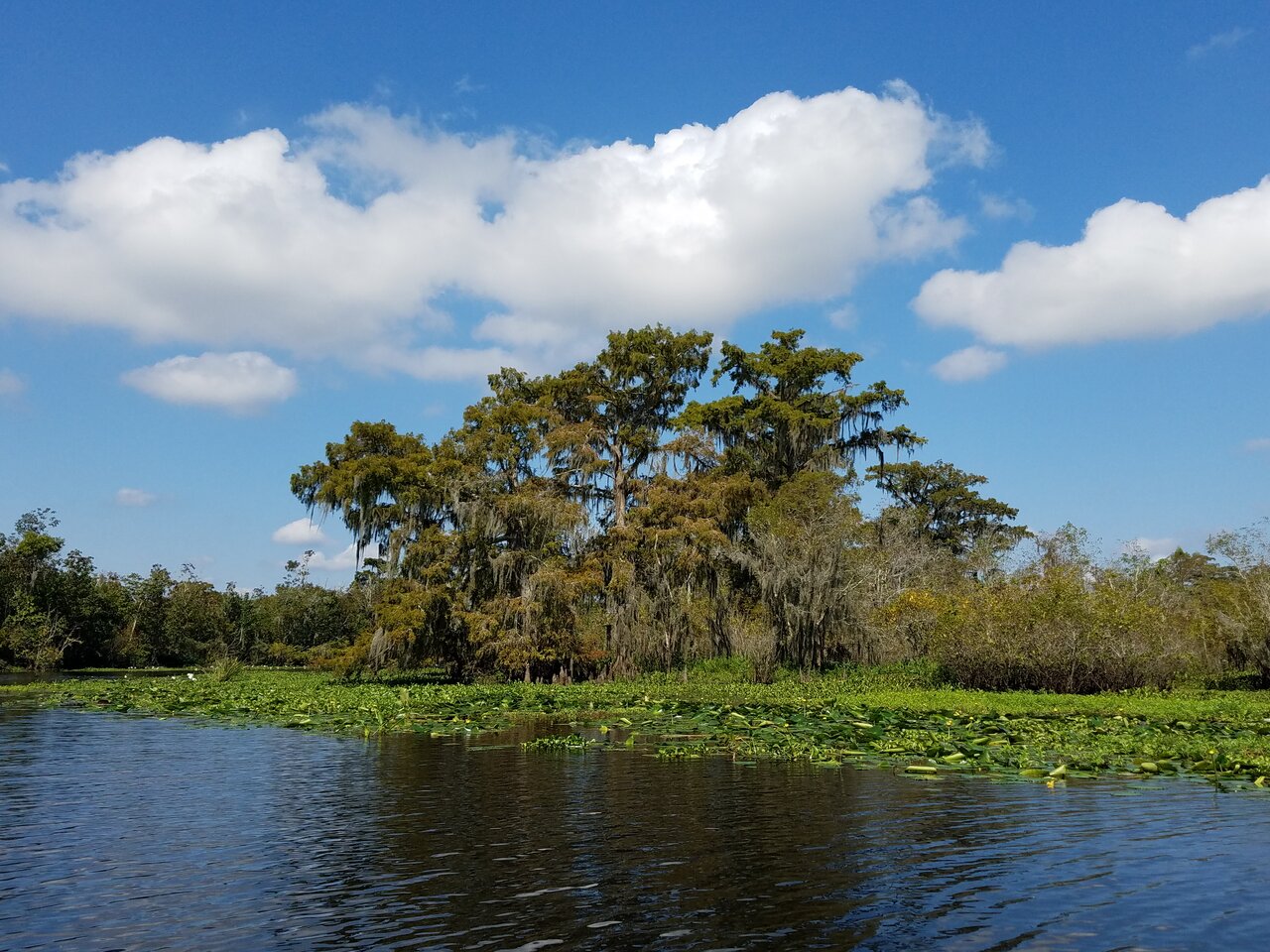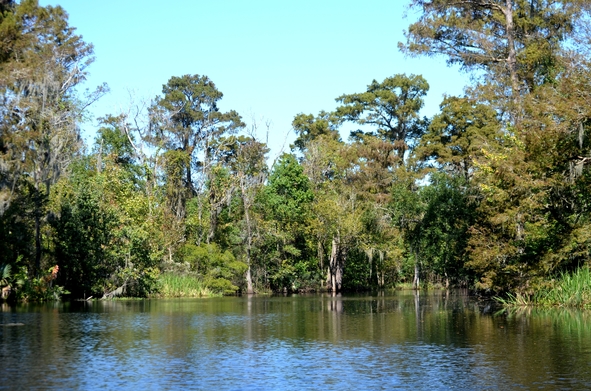Written by Wendy Billiot for Louisiana Wildlife Federation
Driving southeast from Baton Rouge on Interstate 10, many people may not realize they are driving through the second-largest contiguous coastal forest in Louisiana–the 140,000-acre Maurepas Swamp. Its southeastern boundary is near where Interstate 55 and Interstate 10 intersect. Traveling north on Interstate 55 and west on Interstate 12 completes a circuit around this huge swamp that offers access to a place of beauty and serenity in the midst of densely-populated areas of southeast Louisiana.
The Maurepas Swamp provides valuable habitat for wildlife, birds, and fish. Within the swamp, the 125,000-acre Maurepas Wildlife Management Area, maintained by the Louisiana Department of Wildlife and Fisheries, offers ample places for hiking, paddling, hunting, fishing and bird watching. Even with these recreational opportunities, one of its most important functions is that of a protective barrier for surrounding communities.
During hurricanes, the trees along waterways and within the swamp serve as buffers against high winds. Baldcypress trees, in particular, have been shown to be resilient to the effects of storms, with mature trees providing a wind buffer. During hurricane-driven storm flooding and substantial rainfall, the trees’ root systems work like siphons, sucking up hundreds of gallons of storm water and rainfall, with some mature baldcypress trees absorbing up to 880 gallons of water per day. This storm-water uptake is vital in protecting outlying communities from flooding.

Maurepas Swamp’s natural functions actively protect citizens, industry and infrastructure in heavily-populated communities in and around East Baton Rouge, Livingston, Ascension, St James, St John, and Tangipahoa Parishes during storms and hurricanes. This swamp is part of the coastal forested wetlands of the Mississippi Delta valued between $3.3 and $13.3 billion per year, providing great economic value for the region.
Over the past several decades, this baldcypress-tupelo forest has experienced significant degradation due to increased salinities and subsidence associated with the leveeing of the Mississippi River and decreased riverine input of fresh water. In spite of the degradation, the Maurepas Swamp continues to perform other vital functions, like the anchoring of the fragile wetland soils. The roots of all the trees, grasses, and other vegetation within the swamp hold the much-needed sediment in place, protecting it from being washed away by water action.
Restoring and maintaining the health of the Maurepas Swamp is vital to the region. With the completion of the Mississippi River Reintroduction into the Maurepas Swamp project, these benefits to those who live, work, and recreate within the Basin will be significantly improved and sustained. The project is included in the approved 2017 Louisiana Master Plan for a Sustainable Coast to divert fresh water and fine sediments from the Mississippi River into the swamp — helping to refresh and restore roughly 45,000 acres of forested wetlands. A healthy Maurepas Swamp habitat for wildlife is vital for communities around it.

